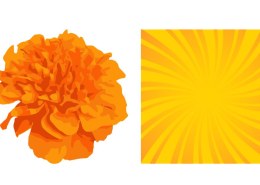If you’ve ever experimented with mixing paints, dyes, or even different colored lights, you’ve probably wondered what color different combinations of hues create. One common mix people often wonder about is what color orange and yellow make when combined.
In this blog post, we’ll explore what happens when these two warm colors come together and explain how the mixing process works, whether you’re dealing with paint, light, or other mediums.
Understanding Color Mixing: The Basics
Before diving into the specific mix of orange and yellow, it’s important to understand the basics of color mixing. The process can vary depending on whether you’re mixing subtractive colors (like paint) or additive colors (like light). However, for this post, we’ll focus on the traditional subtractive color mixing, which is commonly used with pigments such as paints or colored materials.
- Subtractive Mixing: This type of mixing happens when you combine pigments or dyes. The primary colors here are red, yellow, and blue. When you mix them, you subtract wavelengths of light, resulting in new colors.
- Additive Mixing: In the case of light (like on screens), the primary colors are red, green, and blue. Mixing different amounts of these colors adds more light and creates new colors.
Since we’re talking about orange and yellow, we’ll focus on subtractive mixing, which applies to paints, markers, and other physical colors.
What Color Does Orange and Yellow Make?
When you mix orange and yellow together, the result is typically a shade of yellow-orange or a golden yellow. This new color is often described as a warm, vibrant, and slightly darker yellow hue.
Here’s why:
- Orange is already a combination of red and yellow. So, when you mix it with yellow, you’re intensifying the yellow component while still maintaining some of the warmth from the orange.
- The resulting color will generally be a brighter or darker yellow depending on the proportions used, but it will always have that rich, golden tone.
How Different Mediums Affect the Mix
- Paint: If you’re mixing actual paints (such as acrylic or watercolor), you may notice that the mix creates a warm golden color. The more yellow you add, the lighter and brighter the resulting color will be. If you add more orange, you’ll get a deeper yellow-orange.
- Light: If you were mixing colored lights instead of paint, the result could be slightly different. Since light is based on the additive color model, mixing yellow and orange light (both of which are warm hues) will typically create a brighter, more intense warm light rather than a traditional color like yellow-orange in pigments.
Practical Uses of Yellow and Orange Mixing
In art and design, mixing orange and yellow can be used to create beautiful, warm tones perfect for:
- Sunset or sunrise scenes in paintings, where the sky and light have vibrant, warm hues.
- Autumn-inspired designs, evoking the colors of fall foliage like golden leaves and pumpkins.
- Vivid, energetic designs that need a warm, inviting, and lively atmosphere.
A Golden Yellow Hue
In summary, mixing orange and yellow will typically give you a yellow-orange or golden yellow color. This warm and vibrant color can be used to add depth, energy, and brightness to your projects, whether you’re painting, designing, or even working with colored lights.
Next time you’re working with orange and yellow, remember that this blend will give you a beautiful golden hue that radiates warmth and creativity!

